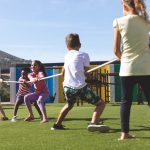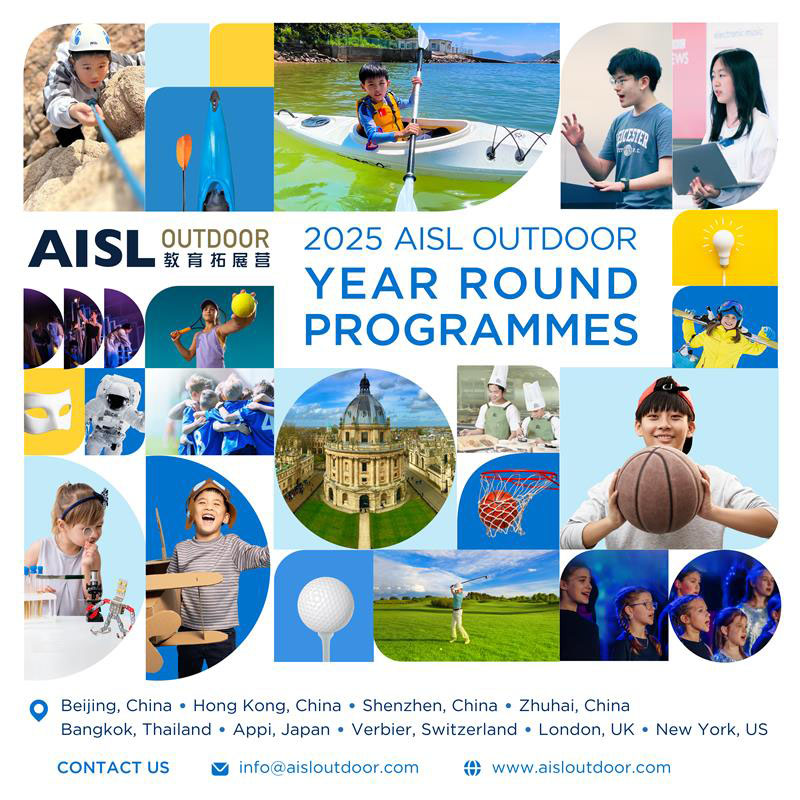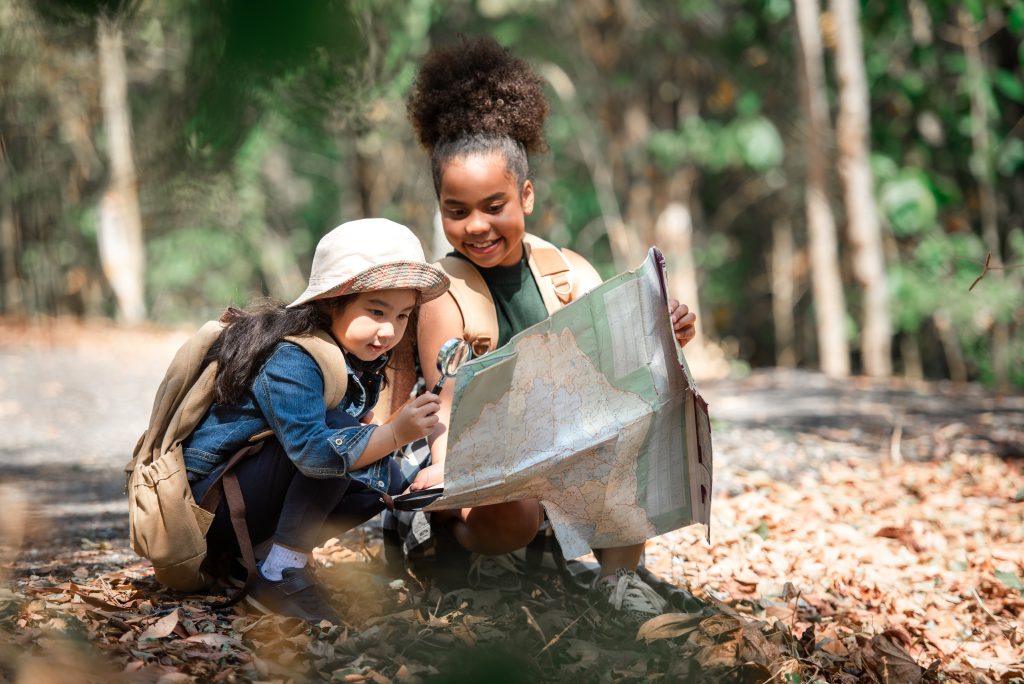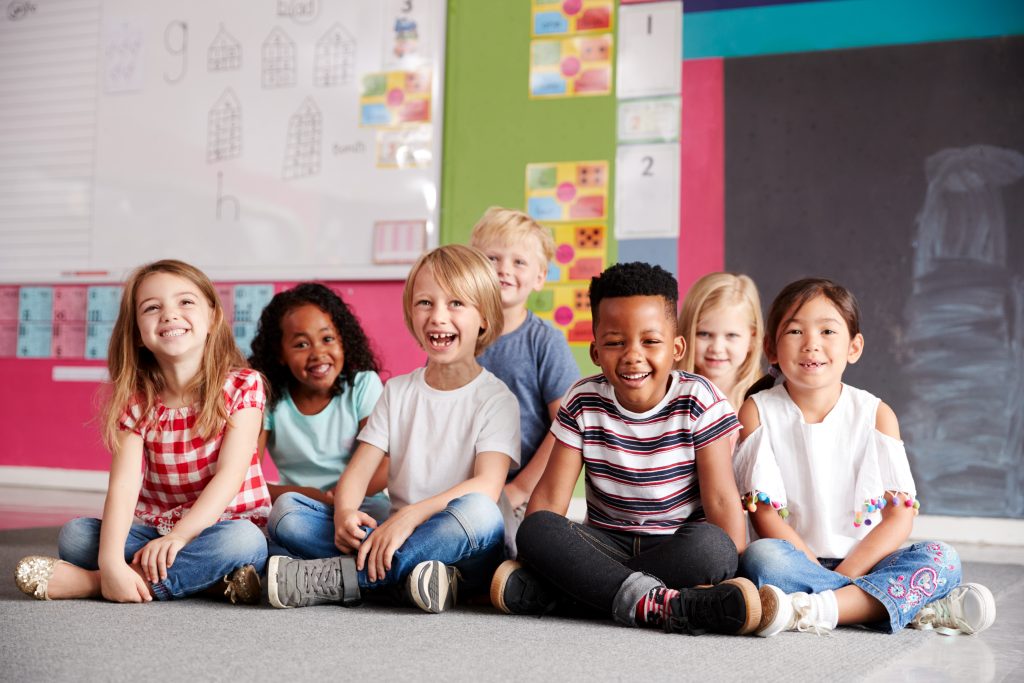In alignment with AISL Harrow’s ambitious Sustainability Vision 2030, we are excited to spotlight a special issue in the upcoming Education Matters magazine focused on Sustainability. This issue features a thought-provoking article Education in the Anthropocene by Anthony Dixon, which focuses on the critical role of education in navigating the unprecedented environmental challenges of our time. It emphasises the role of today’s young people, referred to as the ‘Transition Generation,’ in navigating humanity through worldly challenges in developing a sustainable future.
As we strive to position AISL Harrow Schools as a sustainable Schools Group by 2030, this article underscores the importance of equipping the transition generation with the skills and competencies needed to lead us towards a sustainable future. Through the 5C Strategy – Campus, Curriculum, Culture, Community and Communication, AISL’s vision is to embed sustainability into every aspect of school life, ensuring that our students are not only aware of the pressing environmental issues but are also empowered to take meaningful action. This special issue serves as a testament to our commitment for fostering a sustainable mindset and nurturing the next generation of leaders who will champion sustainability in all facets of life.
THE 21ST CENTURY TRANSITION
In his book The Meaning of the 21st Century – A vital blueprint for ensuring our future, James Martin likened the 21st century to a deep river canyon with a narrow bottleneck at its center and humanity as river rafters heading downstream. As we head further into the canyon around the middle of the century, the rate of societal, technological and environmental change will become more intense – the currents faster and the water more turbulent and dangerous.
There is the prospect of calmer waters up ahead, but the passage through the white waters – what Martin calls the 21st Century Transition – is unprecedented in human history and presents a number of existential challenges. How to live sustainably on a finite planet is prominent among them.
Today’s young people – will be the generation to bring about this transition. The task of the “Transition Generation” as he dubbed them, is to navigate humanity’s safe passage through the canyon to calmer waters on the other side.
Martin, was a renowned authority on technology and society and the founder of the Oxford Martin School, whose mission is to find solutions to the world’s most urgent challenges. Nearly 20 years after the book was published, its predictions, like those of his earlier work The Wired Society which foresaw the internet in the 1970’s, appear to be right on track. According to The World Economic Forum’s most recent annual global risk outlook for example, five of the top ten risks we face in the next decade are related to the environment – extreme weather, critical change to earth systems, biodiversity loss and ecosystem collapse, natural resource shortages, and pollution. Several others are technological including adverse outcomes of AI technology, and misinformation and disinformation.
A detailed assessment of the state of the planet has confirmed the Earth’s stability and resilience depends on nine critical processes. A stable climate is the one that gets the most coverage, but others include freshwater, biodiversity, a healthy ocean and fertile soils. Each of the processes have threshholds that define a safe operating space within which humanity can flourish. Overshooting any one of them risks triggering tipping points which could lead to large scale changes – like the rapid conversion of the amazon rainforest into savannah for example – and the interaction of multiple tipping points could push the earth irreversibly out of the stable state that has characterised the Holocene.
The economist Kate Raworth has overlain the planetary boundaries framework with socio-economic conditions in what has become known as the doughnut economics model. While the planetary boundaries define an ecological ceiling for human impacts on the planet, the doughnut defines a social foundation – a set of basic requirements in 12 areas from education to energy, water, food and housing that are necessary for a just society. Between these two boundaries lies a safe and just operating space for humanity – the calmer waters beyond the canyon that Martin envisaged. The doughnut is a reminder of the interdependence of human wellbeing and planetary health.
Scientists have determined that we have already exceeded six of the nine boundaries and millions of people still lead lives that fall short of the social foundation. The question for us as educators is how well are we equipping the Transition Generation with the skills and competencies to navigate the Transition and how must our approach to education change to reflect this priority?

Figure 1
Caption: The doughnut model defines the parameters for the flourishing of a sustainable and just human society on our finite planet – operating within the nine ecological boundaries and at the same time ensuring an adequate social foundation that meets everyone’s needs for energy food water, housing and education, among other things.
THE WHOLE SCHOOL APPROACH TO SUSTAINABILITY
Schools committed to becoming sustainable communities in a deep sense, have to act on many levels. It isn’t enough to decarbonise the hardware, to build energy efficient or carbon neutral buildings and operate electric buses, necessary as these things are. A software upgrade is also needed – hearts and minds need to be engaged in ways that lead to behaviour change, which, as the UK’s chief scientific advisor has observed is equally important for achieving a sustainable future. School leaders and administrators need to develop the knowledge and capacity to consider sustainability in their decision making. Teachers need opportunities for professional development in education for sustainability, and how to nurture the competencies and skills students will need for the 21st Century Transition. In regard to the latter, as the environmental educator David Orr commented “it is not more education that will save us, but education of a different kind.”
The whole school approach (WSA) to sustainability offers a framework for schools to collaboratively and systematically undertake these transformations.
The WSA seeks to embed learning for sustainability in the day-to-day life of the school so that it is no longer seen as a bolt-on activity or another subject to be taught, but a continually lived learning experience. It does this, by connecting what students learn through the curriculum with what is practiced by the school in its management, operations and procurement. It involves students in decision-making and encourages partnerships with community groups to address real world sustainability challenges. It views the campus itself as a living laboratory for sustainability teaching and learning, something not only the students take part in but the whole community including parents and staff.
Mathie and Wals describe the whole school approach as one that “invites a holistic, systemic, co-creative and reflexive effort by all stakeholders involved in education to meaningfully engage students in complex sustainability challenges.” Holistic in that it explores sustainability issues from multiple perspectives in an integrated and relational way; systemic in that it aims to align many aspects of the school system simultaneously – curriculum, teaching and learning, professional development, school-community relationships, school practices, school ethos, and the school’s vision and leadership; co-creative in the sense that multiple voices and stakeholders are involved in developing the approach and a shared vision of sustainability; and reflexive in the sense that it involves continuous learning, monitoring, evaluating and re-calibrating.
The WSA framework encompasses the six domains depicted in figure 2:
- Vision and Leadership. All stakeholders collaboratively develop a vision for a sustainable school. Leadership enables stakeholder participation and ensures that the school culture aligns with the vision.
- Teaching and Learning: The curriculum connects students to their environment and promotes active engagement with sustainability through place-based and experiential pedagogies, fostering inquiry and transdisciplinary learning. The campus is viewed as a living laboratory for sustainability learning.
- Culture and Institutional Practices: The school aligns its operations with sustainable principles, engages students and staff in efforts to reduced the school’s ecological footprint and expanding its ecological handprint. This requires integrating sustainability into the school’s governance processes among other things.
- Community Connections: School communities are microcosms of the wider world. Recognising this, the WSA fosters school-community partnerships (with businesses, NGOs , local government and other schools) that promote connectedness and place-based learning and contribute to enhancing sustainability in the community.
- Capacity Building: Continuous professional development is important for all staff, including school leaders, teachers, facility managers, and support staff, to embed sustainability as a habitual practice in the day-to-day life of the school.
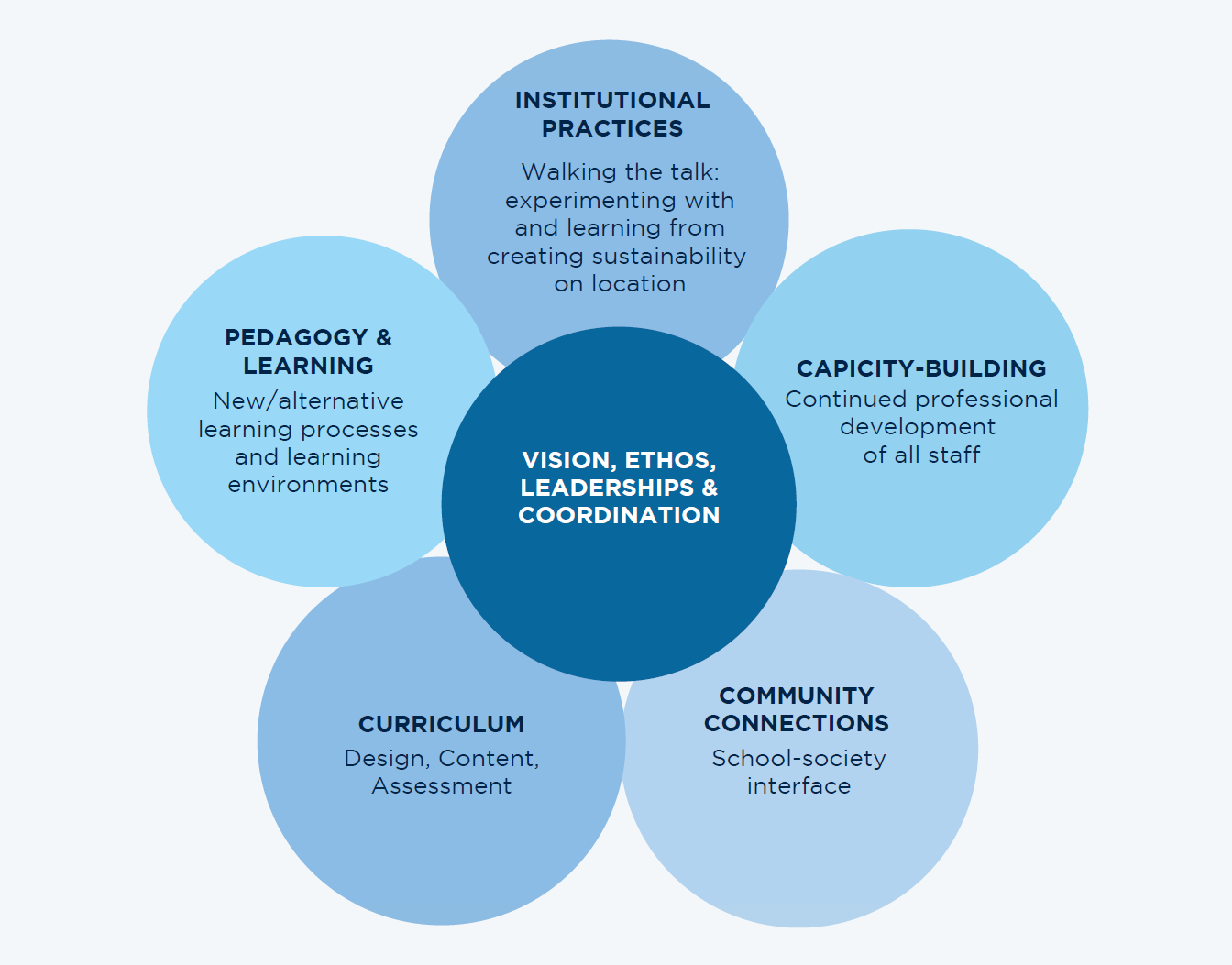
Figure 2
Caption: The six dimensions of the whole school approach to sustainability.
GREEN SKILLS AND SUSTAINABILITY COMPETENCIES
For parents who may be wondering about the relevance of education for sustainability to the job market, the data will be reassuring:
- In the last 5 years, sustainability-related jobs accounted for 3 of the top 10 fastest-growing job postings on LinkedIn.
- At the same time, candidates with the relevant skills are in short supply, and demand is growing faster than supply. If current trends continue, by 2050 there will be twice as many green jobs available as candidates qualified to fill them.
- In the UK it is estimated that around 1.2 million new green-skilled workers will be needed by 2030 to meet that country’s net-zero goals, spanning the construction, transportation, and manufacturing sectors.
- In 2023, more than 16 million new jobs were created globally in the renewable energy sector, an increase of 18% over the year before.
- Among the countries showing strong growth last year in the share of jobs requiring at least one green skill were Portugal (70%), United Kingdom (46%) and Singapore (27%).
All this should come as no surprise, for it is a corollary to the sustainability transition that is already underway. As industries shift towards sustainable practices to address climate change, expertise in renewable energy, sustainable agriculture, environmental science, and soft skills like problem-solving and adaptability, essential for a low-carbon economy are becoming increasingly important.
Students are well aware of this trend, but say they feel unprepared. A 2021 report by Pearson found that out of 5,000 young people aged over 16 in 5 countries including the UK and China, 89% feel the education system in their countries needs to do more to equip students with skills for green jobs. At the same time, in a survey of teachers in England by University College London, less than half of the respondents reported participating in formal professional development related to climate change and sustainability and less than 13% reported that it was included in their Initial Teacher Education.
But to focus on skills alone is to take too narrow a view of the capacities young people will need to be willing and able agents in the creation of a sustainable future. We must think more broadly in terms competencies.
UNESCO defines competencies to mean “the specific attributes individuals need for action and self-organization in various complex contexts and situations. They include cognitive, affective, volitional, and motivational elements; hence they are an interplay of knowledge, capacities and skills, motives, and affective dispositions. Competencies cannot be taught but must be developed over time by the learners themselves. They are acquired during action, based on experience and reflection”.
The World’s Largest Lesson (WLL) has proposed 17 sustainability competencies that young people need – see figure 3. Their research looked at the extent to which learning experiences related to these competencies were included in 154 learning programs in 6 countries; the findings are summarised in figure 4. Among other things, they found a widespread emphasis on instilling sustainability values which leads to individual action (personal behaviour changes), but less emphasis on information skills, systems thinking and changemaking.

Figure 3
Caption: The 17 Sustainability Competencies Young People Need
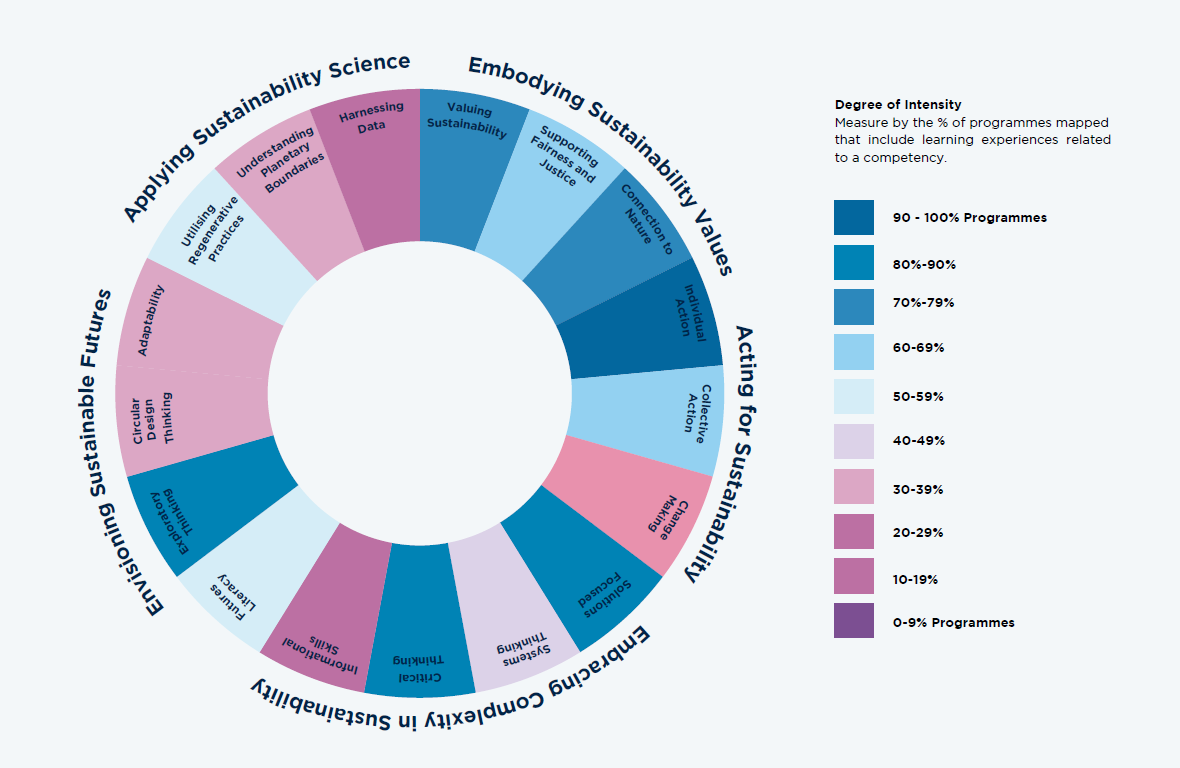
Figure 4
Caption: The degree to which 154 learning programs in 6 countries include learning experiences related to the 17 competencies
Extracurricular activities that may be of interest:
Get a special discount by quoting code AISLMALL during CHECKOUT.
AISL Outdoor Year-Round Programmes
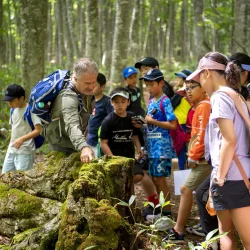
AISL Outdoor offers adventurous outdoor and experiential learning programmes for children. Designed to inspire curiosity and confidence, these programmes nurture skills, teamwork and personal development in supportive settings.
Design & Architect Programs – CreativeKids

CreativeKids has been advancing creative development in children and teens since 1991 with art, design, and architecture programs. Their award-winning courses foster creativity, adaptability, and problem-solving, helping students excel academically and professionally. They also offer Creative Parenting workshops and support for special needs.
Sustainable Global Experience (SGE) Online – Pagoda Projects

Sustainable Global Experience™ (SGE) Online is a 5-day virtual program by Pagoda Projects, offering Carbon Literacy Training and insights from international businesses and NGOs. Students will learn about climate change, SDGs, and carbon reduction, earning official certification upon completion.



